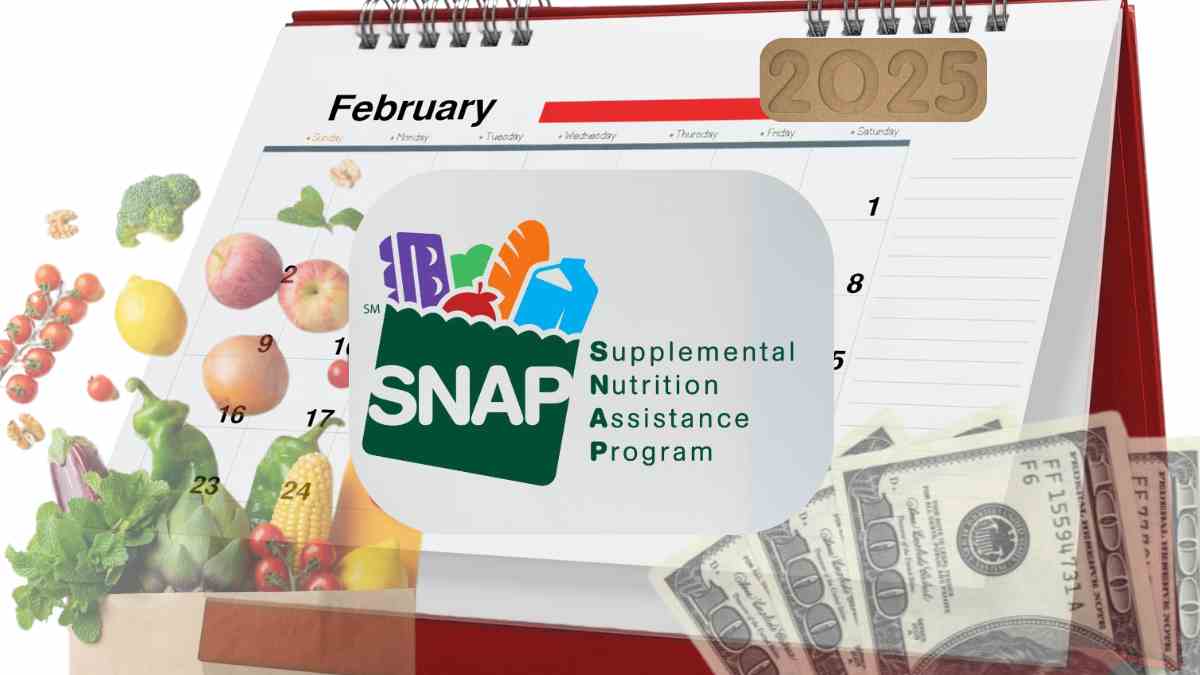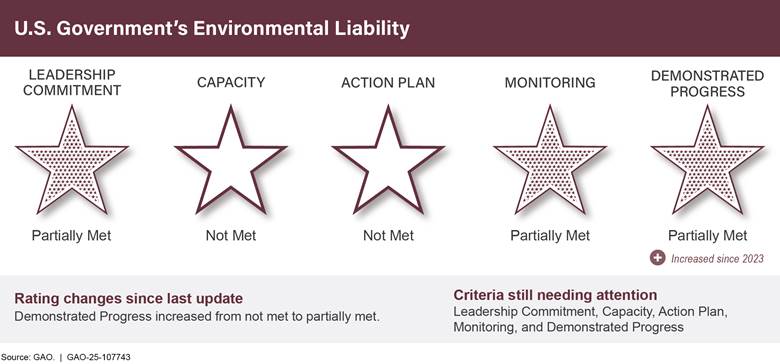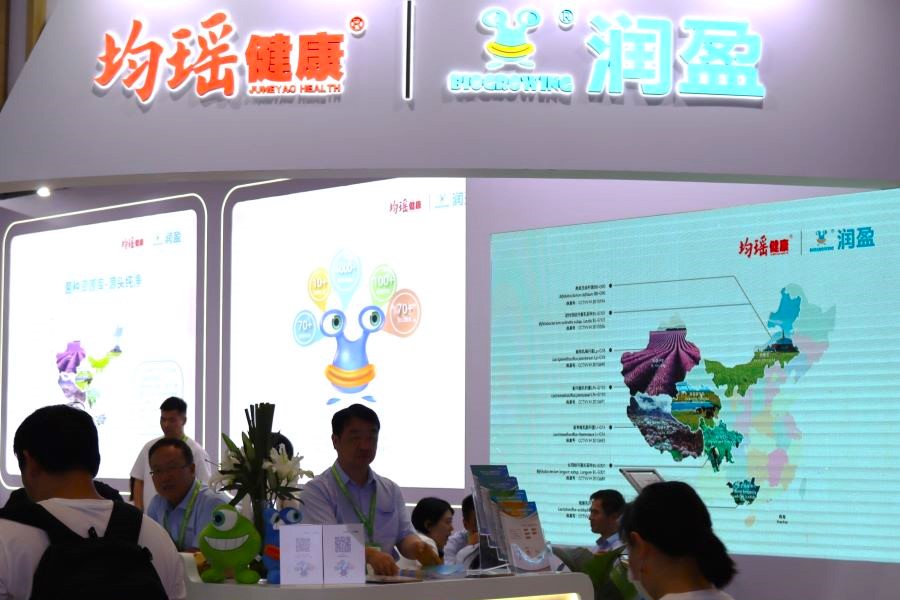Report on the Proposed National SNAP Information Database and its Implications for Sustainable Development Goals
Introduction
This report analyzes a formal comment submitted by the Georgia Budget and Policy Institute (GBPI) to the U.S. Department of Agriculture (USDA) concerning the proposed National Supplemental Nutrition Assistance Program (SNAP) Information Database (NSID). The analysis evaluates the proposal’s significant conflicts with several United Nations Sustainable Development Goals (SDGs), particularly those related to poverty, hunger, health, inequality, and institutional integrity.
SNAP’s Critical Role in Achieving Sustainable Development Goals
The Supplemental Nutrition Assistance Program (SNAP) is a cornerstone of the United States’ social safety net and is instrumental in advancing key SDGs.
- SDG 2 (Zero Hunger): As the nation’s largest food assistance program, SNAP is a primary mechanism for combating hunger and ensuring food security for low-income households, directly aligning with the goal of ending hunger and promoting sustainable agriculture.
- SDG 1 (No Poverty) & SDG 3 (Good Health and Well-being): By providing essential food resources, SNAP functions as a critical anti-poverty tool, safeguarding the health and well-being of the population. Access to adequate nutrition is fundamental to positive health outcomes, reducing the burden on public health systems.
- SDG 10 (Reduced Inequalities): SNAP provides a vital safety net that reduces economic and social inequalities by ensuring that the most vulnerable populations have access to basic nutritional needs.
Analysis of the Proposed Database and its Conflict with SDG Principles
The GBPI raises grave concerns that the proposed NSID and its implementation process undermine the principles of good governance and threaten progress on the SDGs.
Deficiencies in Transparency and Justification
The proposal for the NSID exhibits significant flaws that contravene the principles of accountable and transparent institutions as outlined in SDG 16 (Peace, Justice and Strong Institutions).
- Lack of Clarity: The USDA has failed to provide a comprehensive list of the data it seeks to collect, creating confusion for state agencies and SNAP beneficiaries.
- Insufficient Justification: The stated purposes of validating eligibility and ensuring program integrity appear redundant. Robust systems, such as the National Accuracy Clearinghouse (NAC) established by the 2018 Farm Bill, already exist to prevent interstate dual participation, and the USDA has provided no evidence that these systems are failing.
Erosion of Legal Protections and Institutional Trust (SDG 16)
The proposed “routine uses” for the collected data are excessively broad and conflict with the program’s authorizing statute, undermining the rule of law and eroding trust in public institutions.
- Disproportionate Law Enforcement Access: Routine Use 8 would permit unfettered data sharing for law enforcement purposes, a scope far wider than the limited, household-specific disclosures permitted by law. This effectively transforms a social benefit program into a surveillance tool, which could disproportionately impact marginalized communities and undermine SDG 10 (Reduced Inequalities).
- Overly Broad Inter-Agency Sharing: Routine Use 11 grants the USDA sweeping discretion to share sensitive data with any domestic government agency to combat “fraud, waste, or abuse.” This provision extends well beyond the limited data disclosures authorized by Congress, weakening statutory privacy protections.
Flawed Public Consultation Process
The USDA’s actions have precluded a meaningful public comment period, a key tenet of responsive and inclusive institutions (SDG 16). By issuing a new, imminent data submission deadline of July 24, 2025—one day after the close of the comment period—the USDA has left no time to consider or address public and state-level concerns. This approach disregards the principles of participatory governance essential for building effective and accountable institutions.
Recommendations for Alignment with SDG Commitments
Based on the significant conflicts with established legal frameworks and international development goals, the GBPI has issued recommendations to the USDA.
Primary Recommendation
The USDA should withdraw the System of Records Notice and abandon the proposal to establish the NSID. This action would reaffirm its commitment to statutory privacy laws, the rule of law, and the foundational goals of SNAP, which align directly with SDGs 1, 2, 3, and 10.
Alternative Recommendations
If the USDA proceeds with the database, it must take steps to align the project with the principles of transparent and accountable governance (SDG 16):
- Ensure Clarity and Transparency: Provide a definitive and exhaustive list of all data elements required from states.
- Collaborate on Implementation: Establish a reasonable schedule for data submission in partnership with state agencies.
- Strengthen Data Protection: Work with states to guarantee that all sensitive data is protected, accurate, and subject to rigorous review, thereby protecting beneficiaries and maintaining trust in the program.
Analysis of Sustainable Development Goals (SDGs) in the Article
1. Which SDGs are addressed or connected to the issues highlighted in the article?
- SDG 1: No Poverty
- SDG 2: Zero Hunger
- SDG 16: Peace, Justice and Strong Institutions
- SDG 17: Partnerships for the Goals
2. What specific targets under those SDGs can be identified based on the article’s content?
-
SDG 1: No Poverty
- Target 1.3: Implement nationally appropriate social protection systems and measures for all, including floors, and by 2030 achieve substantial coverage of the poor and the vulnerable.
Explanation: The article focuses on the Supplemental Nutrition Assistance Program (SNAP), which it describes as the “largest food assistance program in the country” and an “indispensable resource” for “low-income households.” This directly relates to the implementation of social protection systems to support the poor and vulnerable.
- Target 1.3: Implement nationally appropriate social protection systems and measures for all, including floors, and by 2030 achieve substantial coverage of the poor and the vulnerable.
-
SDG 2: Zero Hunger
- Target 2.1: By 2030, end hunger and ensure access by all people, in particular the poor and people in vulnerable situations, including infants, to safe, nutritious and sufficient food all year round.
Explanation: The article explicitly states that SNAP was established to “safeguard the health and well-being of the Nation’s population and raise levels of nutrition among low-income households.” The Georgia Budget and Policy Institute’s (GBPI) work aims to “ensure all Georgians at risk of food insecurity have access to food assistance,” which aligns directly with ending hunger and ensuring food access for vulnerable populations.
- Target 2.1: By 2030, end hunger and ensure access by all people, in particular the poor and people in vulnerable situations, including infants, to safe, nutritious and sufficient food all year round.
-
SDG 16: Peace, Justice and Strong Institutions
- Target 16.6: Develop effective, accountable and transparent institutions at all levels.
Explanation: The GBPI’s comment criticizes the U.S. Department of Agriculture (USDA) for a lack of transparency. The article notes that the “Notice for the proposed National SNAP Information Database (NSID) exhibits significant errors and omissions,” and that the “USDA has not provided a full and exhaustive list of the data being sought.” This points to a failure in institutional accountability and transparency. - Target 16.7: Ensure responsive, inclusive, participatory and representative decision-making at all levels.
Explanation: The article argues that the federal government is “not allowing meaningful public comment on this critical issue.” It highlights that the USDA set a deadline for data submission immediately after the close of the public comment period, leaving “no time to consider, let alone meaningfully address, any comments or concerns from the public.” This is a direct critique of the lack of a responsive and participatory decision-making process. - Target 16.10: Ensure public access to information and protect fundamental freedoms, in accordance with national legislation and international agreements.
Explanation: A major concern raised is the protection of privacy, a fundamental freedom. The article warns that the proposed database’s “routine uses” for SNAP data are “excessively sweeping” and could lead to “unfettered sharing of data for law enforcement.” This is presented as a conflict with the program’s authorizing statute, which protects participant information, thereby threatening a fundamental freedom.
- Target 16.6: Develop effective, accountable and transparent institutions at all levels.
-
SDG 17: Partnerships for the Goals
- Target 17.17: Encourage and promote effective public, public-private and civil society partnerships, building on the experience and resourcing strategies of partnerships.
Explanation: The article itself is an example of a civil society partnership in action. The GBPI, a “nonpartisan policy research and advocacy organization,” is engaging directly with a government body (the USDA) by submitting a formal comment to influence public policy. This demonstrates a partnership between civil society and the public sector to achieve policy goals.
- Target 17.17: Encourage and promote effective public, public-private and civil society partnerships, building on the experience and resourcing strategies of partnerships.
3. Are there any indicators mentioned or implied in the article that can be used to measure progress towards the identified targets?
-
For SDG 1 & 2 (Targets 1.3 & 2.1)
- Implied Indicator: Proportion of the population covered by social protection programs like SNAP and the prevalence of food insecurity.
Explanation: The article refers to SNAP as the “largest food assistance program” and discusses its role in serving “low-income households” and those “at risk of food insecurity.” The number of SNAP beneficiaries and statistics on food insecurity rates would serve as direct indicators for measuring the success of this social protection system in combating hunger and poverty.
- Implied Indicator: Proportion of the population covered by social protection programs like SNAP and the prevalence of food insecurity.
-
For SDG 16 (Targets 16.6, 16.7, 16.10)
- Implied Indicator: Existence of and adherence to regulations concerning public consultation and data privacy.
Explanation: The article’s critique implies that progress can be measured by whether institutions follow established procedures. It points out that the USDA is “not allowing meaningful public comment” and that the proposed data sharing conflicts with existing statutes like “7 U.S.C. § 2020(e)(8).” Therefore, an indicator would be the degree to which government agencies adhere to legal frameworks for public participation and data protection. - Implied Indicator: Level of transparency in government operations.
Explanation: The complaint that the USDA “has not provided a full and exhaustive list of the data being sought” and the “lack of clarity on the records that will be collected” suggests that transparency can be measured. An indicator would be the completeness and clarity of information provided by government bodies to the public and other stakeholders regarding new policies or systems.
- Implied Indicator: Existence of and adherence to regulations concerning public consultation and data privacy.
-
For SDG 17 (Target 17.17)
- Mentioned Indicator: The number and nature of formal submissions from civil society organizations to government agencies.
Explanation: The article itself, a “formal comment” submitted by the GBPI to the USDA, is a direct and tangible indicator of a multi-stakeholder partnership at work. The act of submission and the government’s response to it can be used to measure the effectiveness of such partnerships.
- Mentioned Indicator: The number and nature of formal submissions from civil society organizations to government agencies.
4. SDGs, Targets, and Indicators Table
| SDGs | Targets | Indicators (Mentioned or Implied in the Article) |
|---|---|---|
| SDG 1: No Poverty | 1.3: Implement nationally appropriate social protection systems and measures for all… and achieve substantial coverage of the poor and the vulnerable. | The proportion of the low-income population covered by social protection systems like SNAP. |
| SDG 2: Zero Hunger | 2.1: End hunger and ensure access by all people… to safe, nutritious and sufficient food all year round. | The prevalence of food insecurity among the population, which SNAP aims to reduce. |
| SDG 16: Peace, Justice and Strong Institutions | 16.6: Develop effective, accountable and transparent institutions at all levels. | The level of clarity and completeness of information provided by government agencies (e.g., the USDA providing a full list of data sought). |
| 16.7: Ensure responsive, inclusive, participatory and representative decision-making at all levels. | The existence of and adherence to processes for meaningful public consultation in policy-making. | |
| 16.10: Ensure public access to information and protect fundamental freedoms… | The existence and implementation of laws protecting personal data and privacy from misuse (e.g., preventing “unfettered sharing of data for law enforcement”). | |
| SDG 17: Partnerships for the Goals | 17.17: Encourage and promote effective public, public-private and civil society partnerships… | The submission of formal comments and policy analysis by civil society organizations (like GBPI) to government bodies (like USDA). |
Source: gbpi.org







